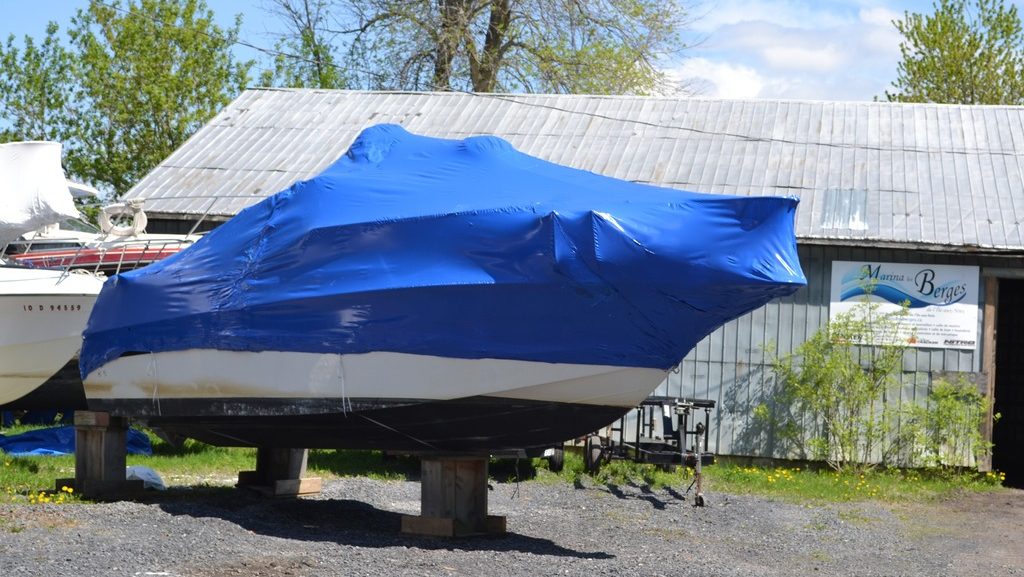Here we’ve got some practical tips on how to prepare your boat for the new boating season. This list is especially applicable to recreational craft measuring 17 to 35 feet. It’s not necessarily exhaustive and doesn’t take account details specific to certain models or engines. That’s why it’s always a good idea to check the manufacturer’s instruction manual or seek the advice of a recognized dealer.
Removing the storage cover
Once the cold season is over and milder temperatures are upon us, it’s time to pull the storage cover off your vessel. To prevent mould stains and the smell of gas, it’s important to replace your thick canvas or shrink wrap cover with fabric that breathes, such as a canvas or complete boat roof. This task should be done around the end of April or beginning of May.
Installing batteries
In the spring, the first step to getting your boat back into working order is to start up the engine. To do this, you’ll have to make sure that the batteries have been properly recharged and are securely fixed to the floor (so that there’s no chance they can turn over onto their sides).
To ensure a good connection with the engine, you also have to clean the battery terminals using a rattail file or sand paper. Make sure you do this before installing and tightening the battery cables. As a safety measure and to prevent any hazardous contact, cover each of the terminals with its special cover (the red or black tips that insert into the ends of the battery cables).
Checking the water tubes
Before starting up your engine, make sure that your cooling system is water-tight. If this isn’t something you’ve done before, I recommend you read the manufacturer’s instruction manual. It will give you a better understanding of where to find the drain plugs and manifolds. Every engine model is different, but in general the cooling system* includes at least four drain cocks that need to be properly closed before putting your boat back in the water. This is also a good time to tighten the quick-couplings on the tube that connects to the engine’s water pump .
Engine oil
Spring also presents a good opportunity to check and change the oil and filters. Once again, the manufacturer’s manual** will tell you the exact oil levels and how to replace the oil and gas filters (more commonly known as water separators).
Drive unit: gear oil, anodes and propellers
The manufacturer-recommended gear oil—most often called “High Performance Gear Lube”—must be replaced every year. During the oil change is also a good opportunity to verify that the drive unit is water-tight.
The anodes that protect the drive unit’s metal box against corrosion should be checked and replaced as needed. If they are less than half of their original weight, it’s time to replace them.
The propeller should also be examined during the spring check-up. A damaged blade can affect engine performance. Thus, damaged propellers should be repaired or replaced by another one of the same size and pitch.
Safety equipment and accessories
You should always make a point of checking the contents and proper functioning of your safety equipment, both in the spring and throughout the boating season. Here’s a short spring safety checklist:
– Verify that the boat’s drain plug is securely in place.
– Make sure the bilge pump works in Manual and Automatic modes. Also ensure that there is no debris blocking the pump or its activation lever.
– Replace any expired fire extinguishers. Also make a point of memorizing where the extinguishers are kept so that you can find and access them easily in case of emergency.
– Make sure that you comply with Transport Canada safety regulations, especially indications relating to lifejackets, lifebuoys, buoyant heaving lines (floating rope), anchors and anchor connectors.
___________________________________________
*Internal cooling systems (closed circuit or antifreeze coolants) do not need to be drained in the fall.
**A boat dealer or marina technician can advise you which parts need to be replaced.

